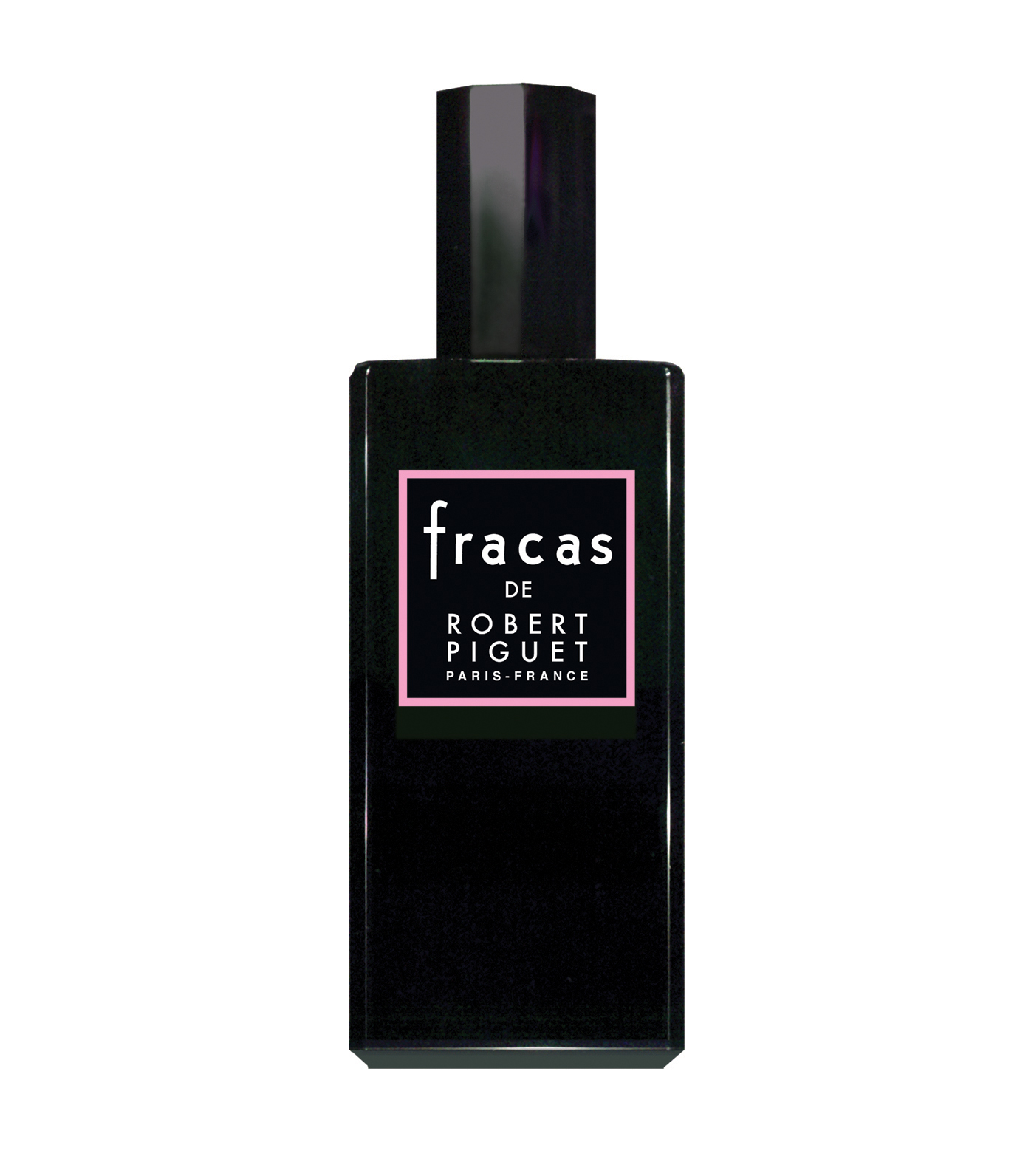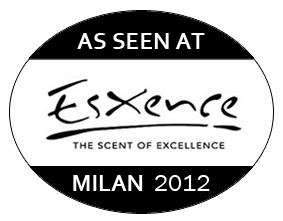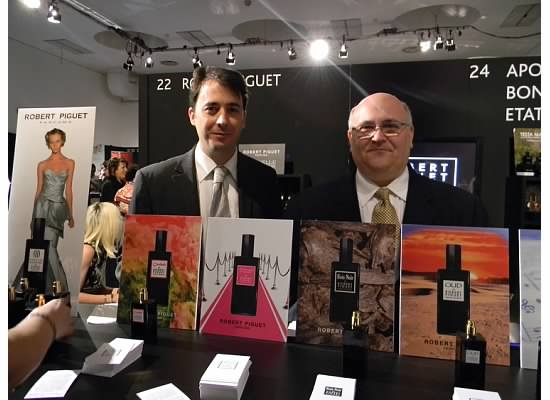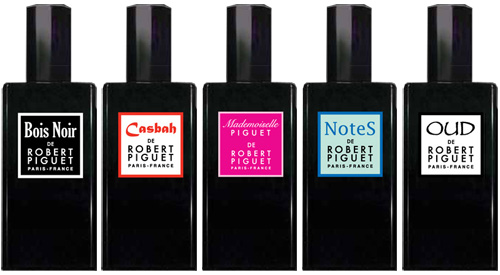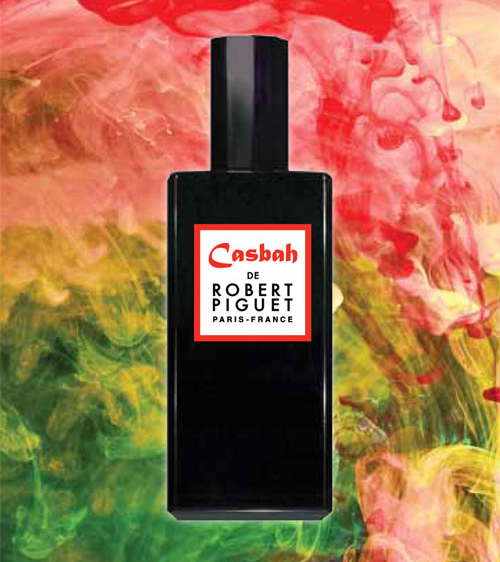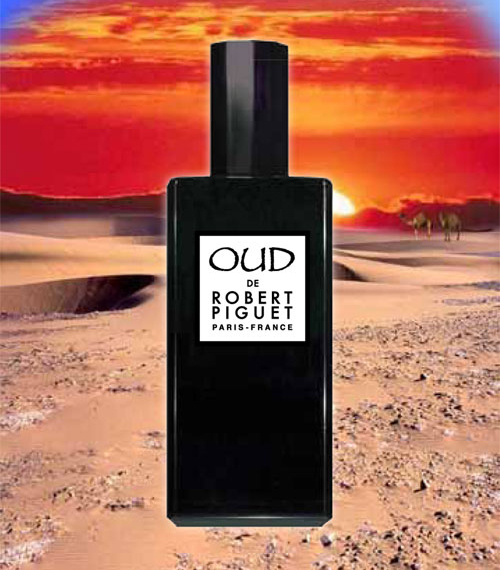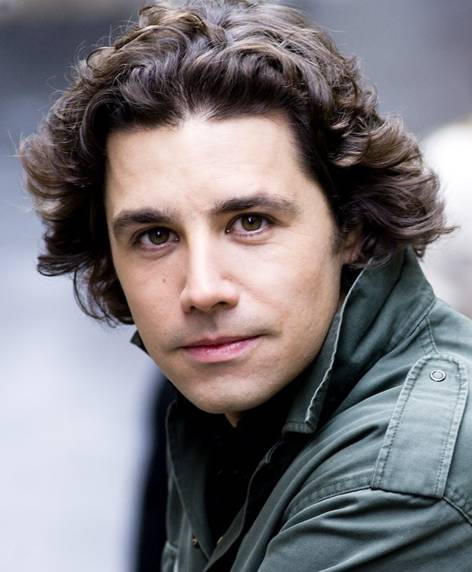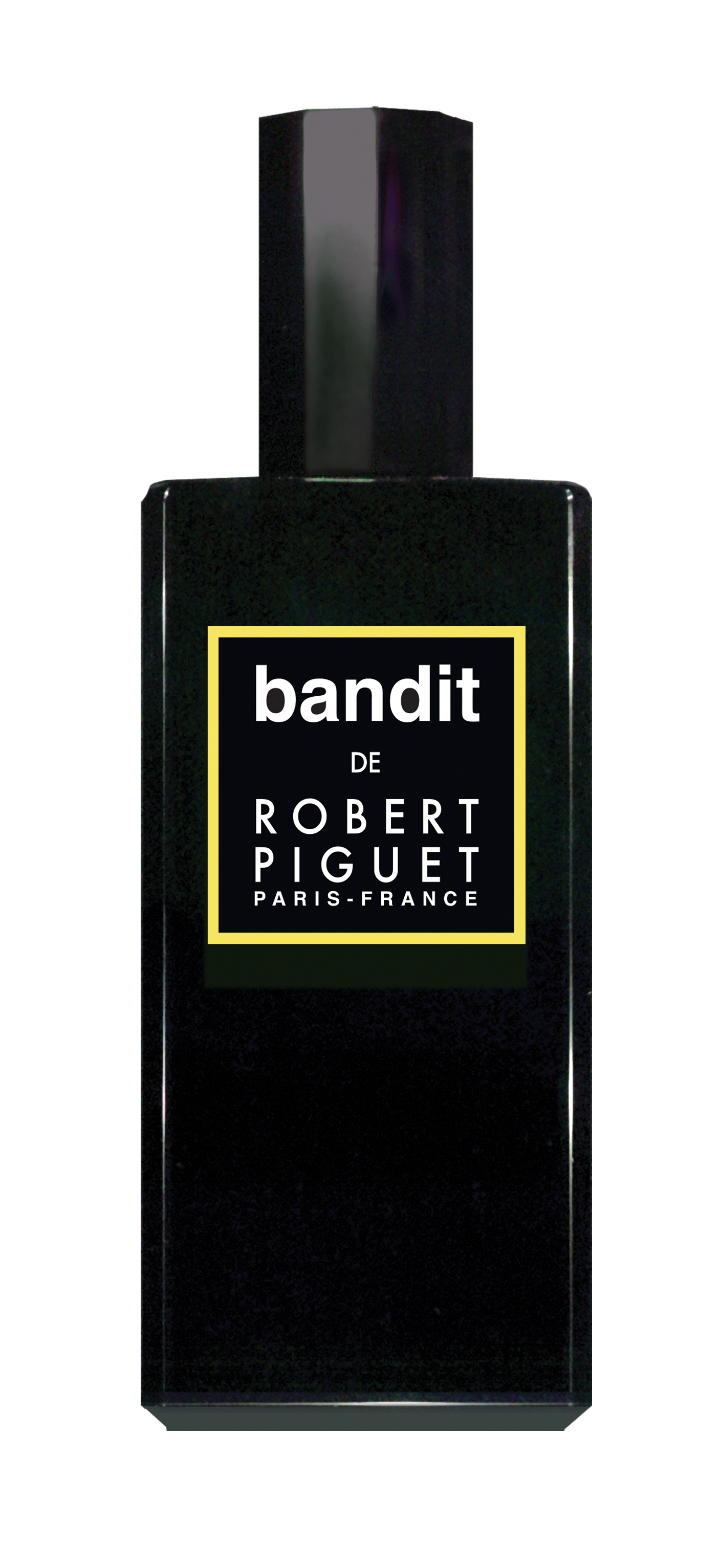June 8, 2012
Trustee of the Legacy
Joe Garces, President of Robert Piguet Parfums releases The Nouvelle Collection
by Mark David Boberick
Managing Editor
How do you take an iconic French fragrance house with a range that includes some of the most legendary perfume masterpieces the world has ever known, and plant it firmly and distinctly into the perfume-crazed 21st Century? The simple answer: you hire Joe Garces. With the recent release of the Nouvelle Collection of 5 brand-new fragrances, Robert Piguet Parfums continues to take the luxury fragrance market head on. With Garces at the helm, no detail is ever overlooked.
As President and CEO of the brand since 1992, Joe Garces is one of the hardest working men in the fragrance industry. I managed to catch him fresh after his return from training employees in Paris and London and mere hours before getting back on a plane bound for Singapore. Globetrotting comes with the territory when you’re launching a major collection of new fragrances but for Garces, time spent in the air is well worth it if it spells success. “Oud has only been out for 1 week and it’s already the number 3 best-selling fragrance in Harrods,” he informs me mere seconds after picking up the phone. The Oud that he is referring to is one of the 5 fragrances in the Nouvelle Collection, which also includes Notes, Casbah, Mademoiselle Piguet, and Bois Noir. With Harrods having the largest beauty and fragrance department of any store in the world, the significance of rising to number 3 in the list of the top 10 best sellers is certainly worth celebrating, especially when the feat only took a week. But no doubt, the greatest accomplishment to date is Garces’ impressive revitalization of Robert Piguet Parfums.
The brand was created by French couturier Robert Piguet in Paris in 1933, fresh after working for couturiers Redfern and later, Paul Poiret who would become one of Piguet’s lifelong friends. Piguet’s influence extended to many of the designers who trained under him including Pierre Balmain, James Galanos, Hubert de Givenchy, and Christian Dior. But perhaps the most indelible mark left by Robert Piguet came when the designer turned to perfumer Germaine Cellier and asked her to create his first fragrance. The result was 1944’s intensely provocative Bandit, one of the very first leathery chypre fragrances that firmly rooted Cellier into the annals of extraordinary perfumers. Bandit’s genius lies in its significant dosage of 1% isobutyl quinoline. A pioneer, Cellier’s contributions to the fragrance industry continued with 1947’s Vent Vert for Pierre Balmain, which is considered to be the first green fragrance, resulting from its overdose of galbanum. But the pinnacle for Piguet and for Cellier came in 1948 with the release of Fracas, the iconic landmark floral and perhaps Cellier’s most-coveted perfume. The fragrance, which embraces the often-difficult Indian tuberose absolute, is an olfactory example of The Golden Ratio. Everything about Fracas is successful – from the diffusion, to the structure. It is persistent, both on the skin and in memory. And then of course, there is the massive fan base that it has accrued, everyone from Martha Stewart to Madonna (The Queen of Pop recently released her debut fragrance that smells, well – like Fracas.) However, for as iconic and perfect as Fracas was, it began to get mistreated. While the fragrance never officially went out of production, the ownership of its trademark changed hands and eventually, the fragrance became mismanaged and took a nose-dive in terms of quality. Fragrance expert and author Michael Edwards explains, “Fracas is one of the great examples of the brand diversion that occurred in the 80s and 90s. Fracas in the 1990s had been prostituted; the company that had bought it over had drastically brought down the production cost by changing the formula and switching to a cheap, synthetic tuberose – it was a shadow of itself and it was why I didn’t include it in my 1998 book, Perfume Legends. But then Joe got hold of it, went back to the perfumers at Givaudan who held the original formula and said, ‘look at your original formula. Give me back the original formula.’ And so we now have the great maestro back.”
But the restoration of the great Piguet/Cellier collaborations was not entirely that simple. Garces explains, “we went as close as possible to the original formula because some ingredients that were available in 1948 you simply cannot use anymore. But they did go as close as they possibly could. To help us further, we even put an ad in a magazine that said ‘If you remember the true classic Fracas, call 1-800-4-FRACAS.’ And we got thousands of phone calls!” After a few mismanagements, the now salvaged Piguet label was finally back up and running. But there was just one catch - it was in debt.
“For the first 2 years, I did everything myself, which is why you didn't see any new releases during those first several years. It took about 4 years to recuperate to the point where I could pay everyone off. Once that happened, then we could start creating new fragrances.” However, the fragrances that Garces then created were not entirely new. To further restore the legendary fragrance house, Garces began to re-issue other lost fragrances from the Piguet archives starting with 2006’s soft aldehydic floral, Baghari, which was originally launched in 1950. “Piguet made about 20 fragrances. Some of them were interesting, others were not. For instance, one was called Dingo,” Garces says. Fortunately, Garces spared us a modern-day Dingo, but presented us with other masterpieces such as 1947’s Visa and 1963’s Cravache, both reissued in 2007. The man behind these restorations was Givaudan perfumer Aurelien Guichard. “He is a genius,” proclaims Garces.
After several successful years spent reincorporating the lost Piguet fragrances into the range, and establishing the company as a global brand, the stage was set for Garces to move the Robert Piguet DNA forward by releasing entirely original fragrances. 5, to be precise. After 8 months of development, The Nouvelle Collection officially launched in March at Esxence in Milan. “We created the 5 fragrances to show that, here we are, the House of Piguet and we have already re-released 8 of Robert Piguet’s classics, but we want to show that we can make our own fragrances, too. There were no budgets or briefs for the fragrances. Our main goal was to create masterpieces and you cannot create masterpieces with limitations," explains Garces.
Garces explains, “I was hesitant to make Oud because everybody has done it, but I figured if I was going to do it, I should at least understand it. I turned to a friend in the Middle East and I said ‘Please show me what real oud is; I know that it’s extracted from a tree and it’s very intoxicating, but I am very confused because I keep seeing rose ouds, incense ouds - all of these different kinds of ouds. He really gave me a great education on oud from the extraction process, the places or origins, and all of the many different grades of oud. Oud is basically an essential oil and in the Middle East, it is worn behind the ears so that when they kiss each other, they can smell it – it is a cultural tradition. But an Arab does not gravitate towards Oud blends – rose oud, for example. They wear real oud. So I was invited to my friend’s house and he brought out the finest real oud, worth around $3000 a mililiter and he put it behind my ears. The thing about oud for people who are not culturally accustomed to it, is that it is really an acquired taste. The large majority of people outside of the Middle East are just not used to it, and will probably find it very repulsive at first. So I was very shocked when he first put it on me, I thought I really smelled awful. But he told me to be patient. So, we carried on with our agenda and a little while later, we were out and I touched my ear and I smelled something and thought, ‘Wow – this is really incredible.’ He was absolutely right. Because oud is an essential oil, it takes a lot longer for it to absorb into your skin as opposed to a regular perfume which relies on the alcohol to deliver the oils directly into your skin and causes them to evaporate. But an oil will stay on your skin much longer. So, the amazing smell that I got a whiff of was right around the time when the oud essential oil went from ugly to beautiful - or at least what I felt was beautiful. So when we decided to make Oud for the Nouvelle Collection, we wanted to capture this moment of beauty that didn’t require a period of time for the oil to be absorbed, and also didn’t demand a $3000 price tag. And this is the fragrance that Aurelien gave me. But it absolutely needed to honor the tradition of the Middle East – I didn’t want to play a game with someone else’s culture. We have tested it in the Middle East and it has received incredible feedback.”
Of the 5 new fragrances, Garces names Casbah as the fragrance that took the longest to develop. “It contains 27 different incenses.” Garces says the Moroccan bazaars were one of the key inspirations for the fragrance, sighting in particular the heavy presence of incense and also the smell of burning tobacco. “The balance of the incense was the most difficult thing to perfect. If one incense was too high, it knocked off the balance. If something went too low, it weakened the structure. So it took a while to get the formula balanced. Bois Noir also had its difficult moments due to the many different wood notes in the formula. We wanted something very cutting-edge and modern. The balsams of the Rocky Mountains were a key inspiration for Bois Noir. The overall feeling of the scent was meant to be strong and powerful, and the fragrance really makes you want to keep smelling.”
Rounding out the Nouvelle Collection is Mademoiselle Piguet, an exquisite orange blossom fragrance that is developed in the true French sense, and Notes, a bewildering fougere of impeccable tenacity and mystery. The name is a musical reference, not a commentary on the scent’s ingredients, and when worn, it is “performed” by the skin. One never quite knows exactly how Notes will sound, but each melody is pleasing to the nose. It is a perfect fragrance that demonstrates olfactory architecture worthy of the Pritzker prize.
Robert Piguet Parfums has become a force to be reckoned with on the luxury fragrance market. It is currently the 7th best-selling fragrance brand in Harrods with sales up 385% over last year. No, that’s not a typo. So what’s next for the company? Garces and Guichard have already collaborated on a forthcoming trio of fragrances entitled The Pacific Collection which will include Blossom, Chai, and Junesse. The collection will address the discerning tastes of the Asian market, but will be available to the entire Piguet client-base. “The Asians prefer fragrances that are entirely different from the ones that Americans and Europeans wear. We have to capture a generation that likes lighter fragrances. The three fragrances will definitely contain the Piguet DNA, but will use more delicate ingredients," he explains. Thanks to Joe Garces' dedicated direction of the historical fragrance company, we know exactly what that DNA smells like. And it is, in a word, divine.
This month, we also feature a special fragrance profile of Casbah by Christine Lewandowski, available here.
To order any of the above mentioned fragrances,
visit the Robert Piguet website.
My thanks to Joe Garces for his incredible generosity, and for letting me glimpse into the world of Robert Piguet Parfums.
Special thanks to: Michael Edwards, Debra Pesta, and to Raphaella Barkley for the Esxence photography.
MARK DAVID BOBERICK | Managing Editor
Joe Garces speaks with Michael Edwards at Esxence in Milan.
Mathieu de Vollelongue, French Branch Manager of Robert Piguet Parfums and Joe Garces present The Nouvelle Collection at Esxence in Milan.
photo credit: Raphaella Barkley
Garces aimed big with the new line and instead of branching out with just 1 new fragrance, he demanded 5 and once again turned to Guichard to work his magic. “We were releasing one at a time, and we realized that in some places it worked and in some places, it didn’t work. People have different tastes and different cultures like certain things. I said to Aurelien, ‘our biggest markets are the United States, Europe, and the Middle East and we need to make fragrances that address these markets.’ So we did."
To address the Middle Eastern market, one inevitably needs to turn to oud, the luxury raw material that has become insanely popular in the past four years. It is said that when a person is training to become a perfumer, they must create an eau de cologne. An eau de cologne is to perfume school what the bar exam is to law school – there is hardly any way around it. In the same way, oud has become the eau de cologne of the luxury fragrance market – It is an unwritten, yet almost universally acknowledged law that a luxury brand must, in some way, put their stamp on oud. Many brands have held out for a surprisingly admirable length of time, but they eventually give in. And who can blame them? Oud sells. (Just ask Harrods.)
Aurelien Guichard, Perfumer, Givaudan
The Nouvelle Collection de Robert Piguet
photo credit: Raphaella Barkley
Disclaimer: The views and opinions expressed herein are solely those of the author and/or guest contributors and do not necessarily state or reflect those of The Perfume Magazine LLC, Raphaella Brescia Barkley or Mark David Boberick.
All content included on this site, such as text, graphics, logos, icons, videos and images is the property of The Perfume Magazine, LLC. or its content suppliers and protected by United States and international copyright laws. The compilation of all content on this site is the exclusive property of The Perfume Magazine, LLC. and protected by U.S. and international copyright laws.
The Perfume Magazine.com is solely owned and operated by Raphaella Barkley Raphaella Barkley; Editor, Founder and Owner of The Perfume Magazine LLC.
The Perfume Magazine Forums, The Perfume Magazine.com, The Perfume Magazine FaceBook,The Perfume Magazine Twitter, and Sniffapalooza Magazine.com, as well as all The Perfume Magazine Social Media, is also solely owned and operated by Raphaella Barkley and The Perfume Magazine LLC.
THE PERFUME MAGAZINE LOGO & BANNER
The Perfume Magazine Banner was designed exclusively by GIRVIN and is the property of The Perfume Magazine, LLC.
All images appearing in the banner are registered trademarks of their respected company and are used with permission.
Creed Bottle image in The Perfume Magazine Banner is a registered trademark of Creed and used with permission.
Fracas Bottle image in The Perfume Magazine Banner is a registered trademark of Robert Piquet and used with permission.
The logo and banner are property of The Perfume Magazine, LLC. and are protected by U.S.and international copyright laws.
© Copyright. 2012. All Rights Reserved. The Perfume Magazine LLC 2012
